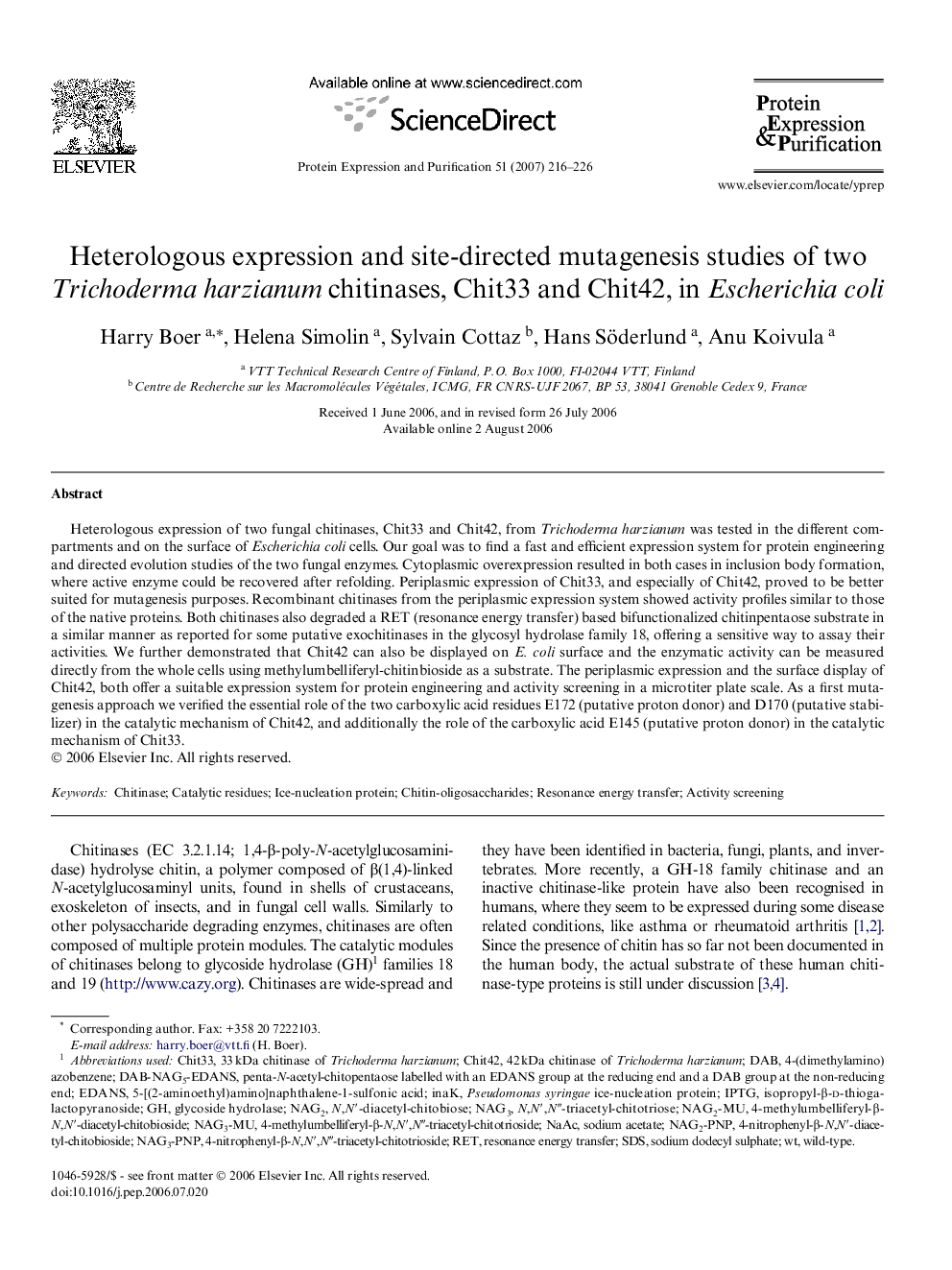| Article ID | Journal | Published Year | Pages | File Type |
|---|---|---|---|---|
| 2021462 | Protein Expression and Purification | 2007 | 11 Pages |
Heterologous expression of two fungal chitinases, Chit33 and Chit42, from Trichoderma harzianum was tested in the different compartments and on the surface of Escherichia coli cells. Our goal was to find a fast and efficient expression system for protein engineering and directed evolution studies of the two fungal enzymes. Cytoplasmic overexpression resulted in both cases in inclusion body formation, where active enzyme could be recovered after refolding. Periplasmic expression of Chit33, and especially of Chit42, proved to be better suited for mutagenesis purposes. Recombinant chitinases from the periplasmic expression system showed activity profiles similar to those of the native proteins. Both chitinases also degraded a RET (resonance energy transfer) based bifunctionalized chitinpentaose substrate in a similar manner as reported for some putative exochitinases in the glycosyl hydrolase family 18, offering a sensitive way to assay their activities. We further demonstrated that Chit42 can also be displayed on E. coli surface and the enzymatic activity can be measured directly from the whole cells using methylumbelliferyl-chitinbioside as a substrate. The periplasmic expression and the surface display of Chit42, both offer a suitable expression system for protein engineering and activity screening in a microtiter plate scale. As a first mutagenesis approach we verified the essential role of the two carboxylic acid residues E172 (putative proton donor) and D170 (putative stabilizer) in the catalytic mechanism of Chit42, and additionally the role of the carboxylic acid E145 (putative proton donor) in the catalytic mechanism of Chit33.
